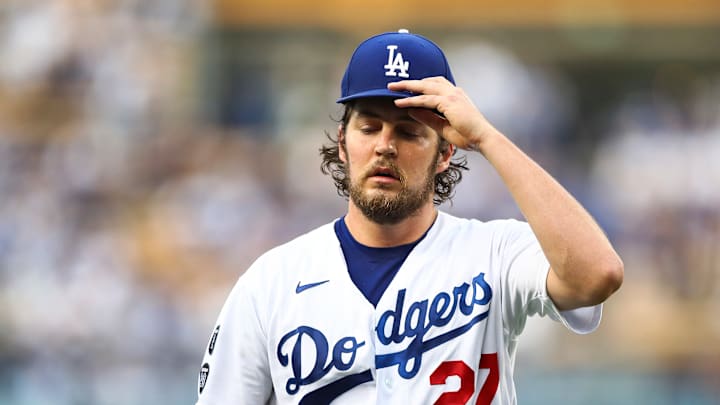We can debate the cause, but the result is clear: Too many of MLB's premier pitchers are experiencing forearm and elbow issues that are keeping them off the mound. Teams have yet to play 20 games, and we've already seen major injuries put players on the sidelines for up to a full season.
From starters like Gerrit Cole and Shane Bieber to relievers like Jonathan Loaisiga, pitchers are going down like flies to start the year.
The obvious finger to point is at the pitch clock, implemented at the start of last season. The MLBPA has already alleged that is to blame for the rise in pitcher injuries, something the league has firmly disagreed with. The theory is that pitchers don't have enough time between body exertion to rest, driving up the risk and workload on the arm.
Zooming out back to the 2021 season, there might be another cause, with an older clip of Tyler Glasnow suggesting it.
Tyler Glasnow once suggested the 'sticky stuff' crackdown was cause of his injury
During the 2021 season, following a crackdown on "sticky stuff" -- a colloquial catchall phrase for various foreign substances pitchers used for grip and enhanced spin rate to produce movement on their pitches -- Glasnow suffered a partial UCL tear with the Rays.
Speaking candidly to the media, Glasnow gave a subtle defense of sticky stuff and painted a picture of the nuance of using it.
Must-listen: Tyler Glasnow's rant on MLB's crackdown on foreign substances.
— Grace Remington (@GraceRemiTV) June 15, 2021
"I 100% believe that contributed to me getting hurt."
He's used the sunscreen/rosin mix, then went "cold turkey" last week against the Nats. 11Ks. But woke up sore. "I felt completely different." (1/2) pic.twitter.com/BU2qCxmrtu
He admitted he regularly used sunscreen and rosin so he could, "get a grip on the ball to where it doesn't feel dusty."
Glasnow said that, while he pitched well when he went "cold turkey" off sticky stuff, he woke up sore in, "places I didn't even know I had muscles in." He explained that he theorized -- and had some discussions with doctors -- that sticky stuff could have been helping to prevent injuries. Pitchers, asked to rid of a lubricant, would need to exert more force on their muscles, ligaments, and tendons in order to achieve similar or same results.
And there's evidence that, despite a lack of grip-enhancing items to reduce the load on the forearm and elbow tendons, spin rate isn't dropping. Opening weekend in 2021, the average spin rate was 2,285 revolutions per minute. Opening day in 2024 was 2,255, a drop of just 1.31 percent. Here are spin rates on popular movement-heavy pitches on opening weekend in 2021 compared to 2024:
Pitch type | Spin rate 2021 | Spin rate 2024 | % change |
|---|---|---|---|
Curveball | 2,548 | 2,565 | 0.7% |
Cutter | 2,415 | 2,395 | -0.8% |
Slider | 2,441 | 2,450 | 0.4% |
Sinker | 2,117 | 2,154 | 1.7% |
Spin rates have either stayed about the same or increased since the last opening day before the sticky stuff ban, which would indicate there is probably at least some truth to the idea that arms are enduring greater stress than before.
One Twitter user framed it by calling back to Trevor Bauer's impact on the sticky stuff crackdown. His loud proclamation against sticky stuff was one of the things that drew attention to the rise in usage and got MLB investigating, albeit years later.
Glasnow's experience now sticks out as a microcosm of the friction between MLB's high expectations for its pitchers and the league's desire for pure results achievement.
Ken Rosenthal put it well in his musing on the matter for The Athletic (subscription required), where he posited whether teams were overvaluing elite performance over 120 innings was truly more valuable than solid, consistent performance over 180.
